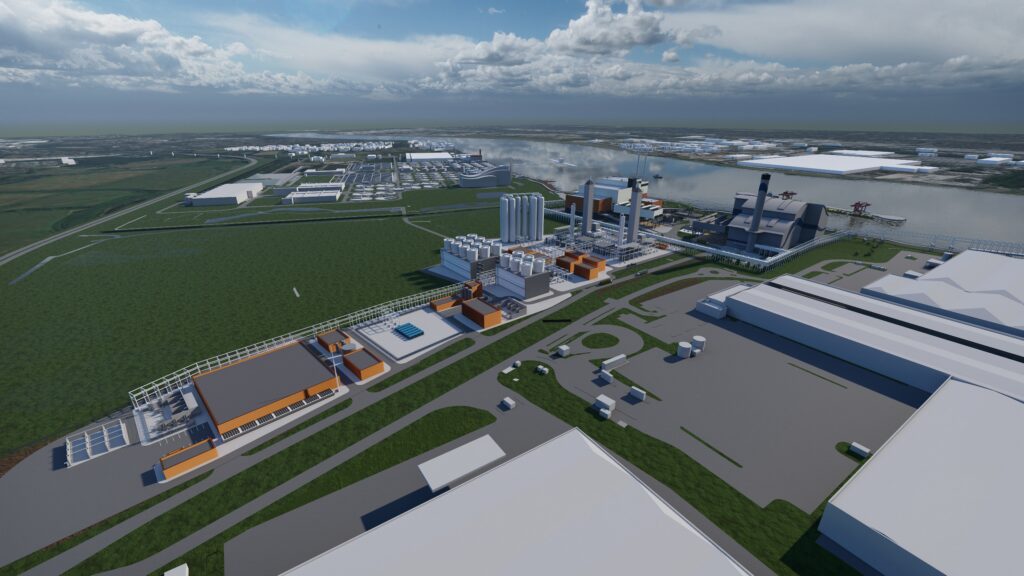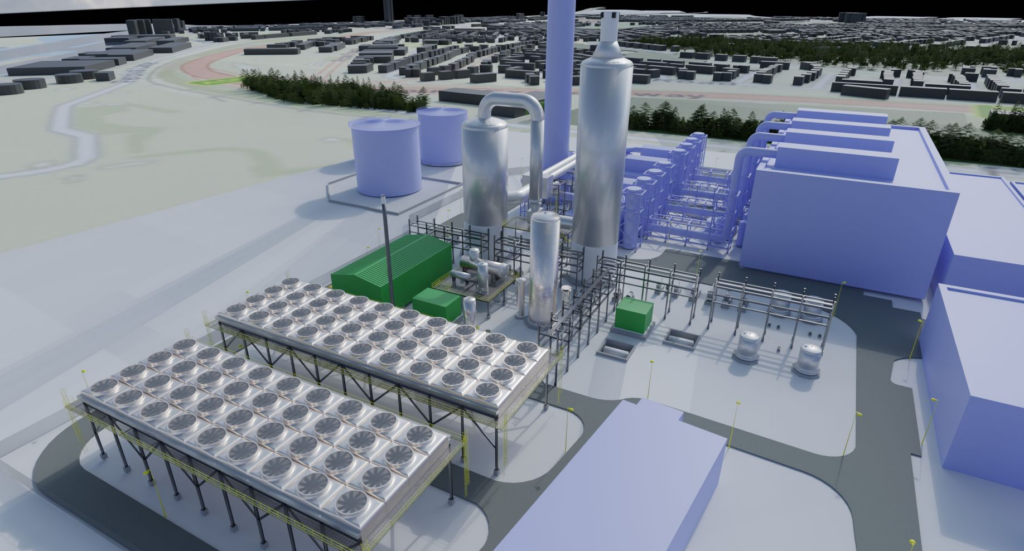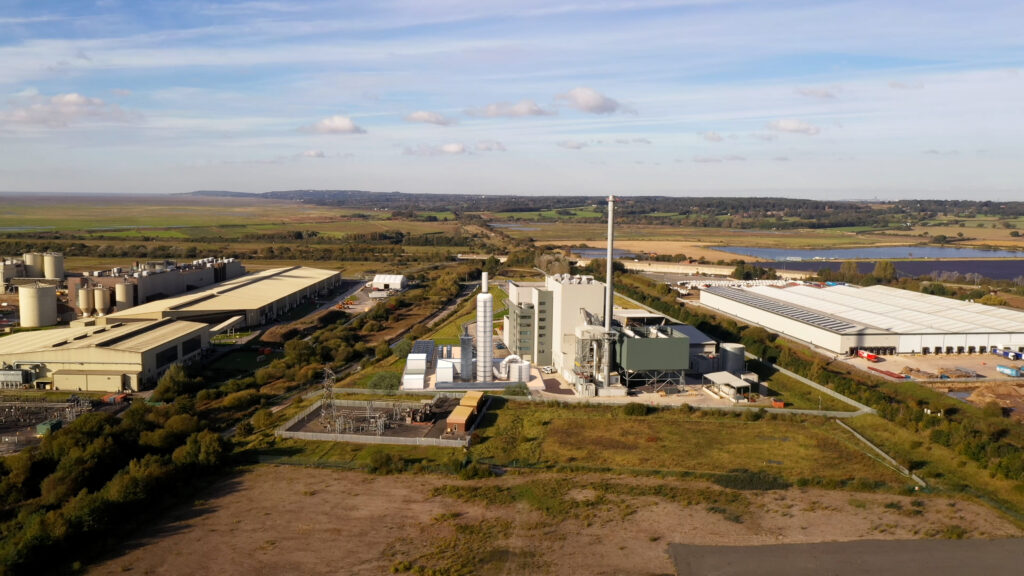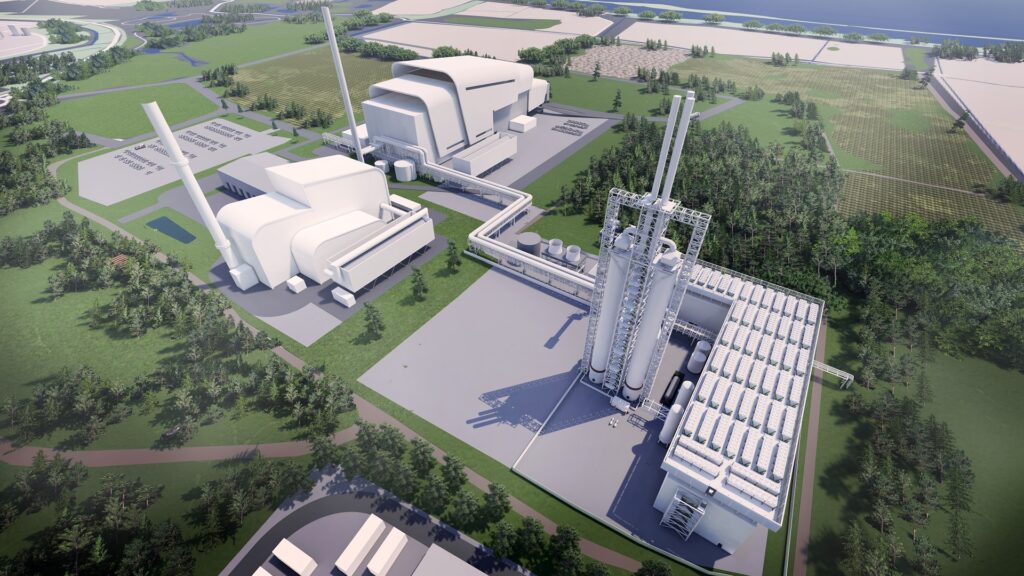Cory unveiled plans for the “world’s largest” energy from waste decarbonisation project in November 2021 (see letsrecycle.com story).
A pre-planning application shows Cory intends to install new CCS facilities at its existing 750,000-tonnes-per-year capacity EfW facility and its new, adjacent 800,000-tonnes-per-year facility (known together as Riverside 1 and Riverside 2). The larger facility is expected to be operational by 2026.
As part of the company’s efforts to decarbonise its business its CCS project aims to capture at least 95% of emissions from its two facilities, saving 1.3 million tonnes of CO2 from going into the atmosphere.
The new CCS scheme was deemed a Project of National Significance which required them to hold a statutory consultation period during October and November in 2023.
The proposals however have proved controversial with local wildlife campaigners because they call for the compulsory purchase and development of land on a protected nature reserve.
Nature reserve
Local campaigners and national wildlife charities have raised serious concerns on the impact of “destroying” six acres of marshland habitat in the Crossness Nature Reserve.
A campaign group called Save Crossness Nature Reserve outlined that while it is not opposed to Cory “cleaning up their act”, the group wants the company “to find another location, preferably on existing industrial land”.
The group explained that Cory has applied to compulsory purchase 11.7% of the 25 hectares of land at Crossness Nature Reserve
The group added that CCS is an untested technology, which has yet to prove it can drastically reduce CO2, and incentivises London’s low recycling rates.
The full application is expected to be submitted to planning inspectors in the first quarter of 2024. Following this key stakeholders will be asked to register submissions before a final decision is made.
Targets
Richard Wilkinson, project director at Cory, said: “The UK Government has set a legally binding target for the country to reach net zero emissions by 2050 to avoid the worst impacts of climate change. Carbon capture technology is the best way for EfW facilities like ours to reduce CO2 emissions by capturing them at source and permanently storing them. Our proposed project would allow us to capture around 1.3 million tonnes of CO2 each year, going even further than net zero to become carbon negative.
“A project with this level of ambition doesn’t come without challenges, and while it will use land owned by Cory, part of our project currently requires building on paddocks that form part of the Crossness Nature Reserve and are situated immediately adjoining the EfW facilities that would be decarbonised. Our plans include the opportunity to enhance existing land within the managed nature reserve as well as increasing its overall size, growing it from its current 25 hectares to 31 hectares. Our proposals also include opportunities to improve green spaces in the local area.
“We have recently concluded a statutory consultation on our proposals, where we sought the views of local stakeholders, and continue to engage with local interest groups about how we can best improve the quality of local green spaces. The responses to the consultation and the input from these local groups will help to inform our final Development Consent Order application for the project, which will be submitted in early 2024.”
CCS
If the plans are approved it intends to transport liquefied CO2 to an offshore storage subsea site in the North Sea – envisaged to be one of four new Government’s CCUS industrial clusters due to become operational by 2030.
It’s estimated together these will store 20-30 megatons of carbon dioxide a year by 2030.
Those in favour of carbon capture see it as a way of removing a majority of the emissions associated with waste treatment. This means energy recovery sites can generate electricity form unrecyclable waste and not emit carbon.
However, the cost and efficacy of carbon capture and storage at EfW plants hit the headlines in October with the publication of two conflicting reports.
A report by waste consultancy Eunomia reported that CCUS technology on EfW facilities could be “some of the cheapest” of any industrial sector thanks to the location of many facilities close to potential CCUS clusters and port hubs.
However, in a report published on 4 October, Zero Waste Europe described CCUS at EfW plants as “an expensive distraction to a circular economy”.










Subscribe for free